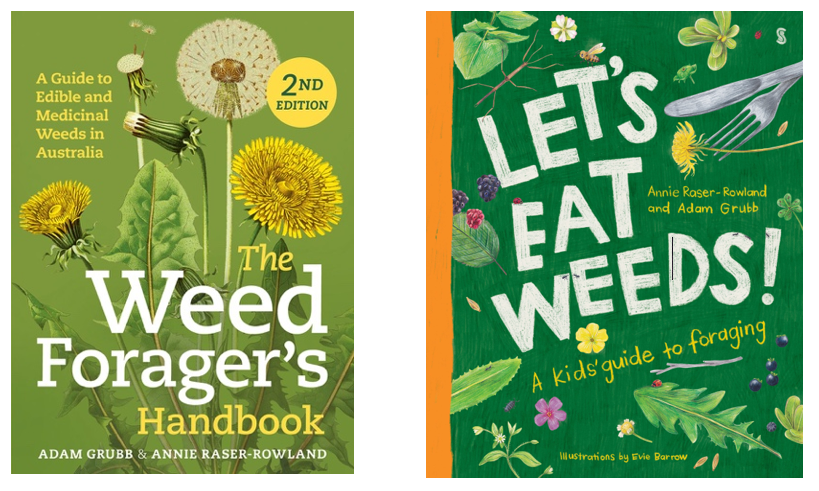10 Edible Weeds (and ideas for how to cook them!)
Notes from the Edible Weed Walk workshop by Adam Grubb from Very Edible Gardens 19.10.25
What if many of the weeds in our garden were just as edible as the vegetables we tend beside them?
What if some of these free, all-too-easy-to-grow uninvited guests were so nutritionally dense that they are just about the healthiest things you can eat: all while being about the most sustainable thing you could possibly eat?
What if many of them also had medical and cultural traditions dating back centuries?
Well, it’s all true! And if you know what to choose, they also taste great. A gastronomic adventure awaits the knowledgeable forager…
Notes of caution
There are of course also many poisonous plants, so proper identification is essential! This page is not an ID or general safety guide, just a quick overview. One way to learn more is to get a copy of the book, The Weed Forager’s Handbook: A Guide to Edible and Medicinal Weeds of Australia by Adam Grubb and Annie Raser-Rowland, and study the weed gallery from the www.eatthatweed.com website, and/or find someone who know to teach you.
But what exactly is a weed?
The textbooks usually define a weed as ‘plant which is growing where it is not wanted’. One culture’s ‘weed’ can be another’s valued crop or a sacred medicinal plant.
So, you also have a choice: two ways of doing the weeding, one involves back-break or toxic sprays, and the other a simple ‘reclassification’!
Here are a few of our favourite edible weeds:
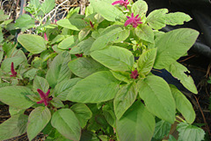
Amaranth (various Amaranthus species)
This ancient grain alternative (it makes thousands of tiny seeds on each plant), prized by the Incas and Aztecs, is also a metropolitan weed and a fine cooking green, high in protein and minerals. Pick the growing tips and young, freshest looking leaves, and boil in water. Discard the water (amaranth contains oxalic acid) and serve dressed as a side dish, or use anywhere you would use spinach.
Amaranth (various Amaranthus species)

Angled onion (Allium triquetrum)
A lovely salad green with a sweet onion and garlic taste as good as any cultivated green onion. Notable for its triangular cross section (thus the name) and its beautiful white bell flowers in late winter and spring. All parts are edible including the bulb in summer which is like a mild garlic. They are deceptively fibrous, especially the tops, which you discover if you try to use them coarsely chopped in cooking, so cut finely. They could be confused with grass before flowering, or snowdrops during, but the smell is unmistakable. See here for some common angled onion look-a-likes.
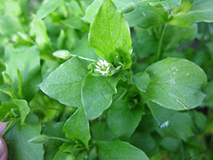
Chickweed (Stellaria media)
This delicate cool season herb is a common volunteer in the veggie patch for it likes moist rich soils. The taste is very mild if a little grassy, and it is highly nutritious, being particularly high in iron, vitamins A and C and antioxidants. Trim just the tops off for the growth tips, which are good in salads, sandwiches and pestos. Look for the single row of hairs along the stem as an identifying marker to distinguish it from its many look-a-likes. Chickweed is an ancient remedy for rashes and other skin conditions, used as poultice or ointment. See here for some common chickweed look-a-likes.
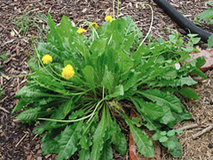
Dandelion (Taraxacum officinale)
Perhaps the most iconic of all weeds, the dandelion is also one of the most nutritious plants on the planet, high in minerals, vitamins and antioxidants. All parts are edible, from salad sensational yellow petals, to the root, which can be slow roasted and used as a coffee substitute (although do be aware of soil toxins in the city). The freshest looking young leaves make an excellent addition to salads for those that like bitter greens, while even older leaves are traditionally cooked and eaten all over the world, e.g. in the Greek horta (wild greens), served with olive oil, lemon juice and salt – all three of which reduce bitterness.
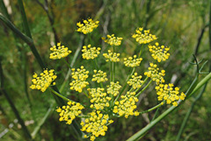
Fennel (Foeniculum vulgare)
Fennel’s feathery foliage and yellow flowers can often be found alongside railway tracks and on other sloping land. Be sure you have fennel by sniffing for its intense aniseed aroma. The seeds and young foliage are both digestive aids and a good accompaniment to bean dishes. Fennel is a popular ingredient in teas, while the pollen is an expensive gourmet ingredient used in sweet and savoury dishes. Medicinally it is a digestive, and one often served after Indian curries coated in sugar.
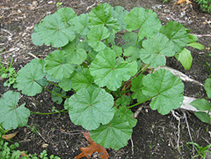
Mallow (several Malva species)
A common sight with its dark green geranium-like leaves, mallow is a lovely mild-flavoured green. It is a relative of okra and contains the same mucilage fibre, which is good for digestion and can thicken soups and stews. Young leaves can be used in salads, but mallow’s flavour develops when it’s cooked. The young round seed heads can be used like tiny okras in stews and curries. They have powerful proven effects against gastric ulcers, and are calmative on sore throats.

Oxalis (Oxalis species)
Also known as the wood sorrels, these clover-like plants are the bane of many a gardener due to its obstinate bulbs. However, they have a delightful lemony flavour and, used like a herb, can be added to any dish where this tang is welcome. Use sparingly as they are rich in oxalic acid. Possibly also avoid in quantity if you are trying to conceive.
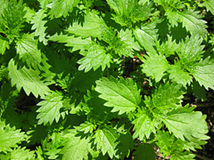
Nettle (Urtica urens)
An easily identifiable weed; one can do it by touch alone, for they carry a fierce sting! If dried, or wilted in boiling water for 30 seconds, they lose this disagreeable feature, and are transformed into a highly nutritious cooking green. Nettles are extraordinarily high in calcium. Strip the young leaves from the stems and use as a spinach substitute, one of such a deep chlorophyll green that it’s easy to appreciate their reputation as a blood tonic. The dried leaves are used for tea, and nettle gnocchi with sage butter is a classic. The sting is used to treat arthritis.
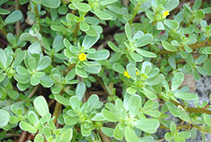
Purslane (Portulaca oleracea)
One of the first plants to colonise bare earth over the warmer months, this prostrate semi-succulent, with its jewel-like leaves and reddish stems is another nutritional superstar, and one valued in cuisines in both the Middle East and Mexico. Purslane has a crisp, tart flavour, and more omega-3 fatty acids than any other leafy green ever tested. Cooked, it excels in tomato dishes. Raw, it’s a great foundation for salads or tzatziki-style dips (we’ve a delicious recipe in the book). Yoghurt also binds up this plant’s oxalic acid.
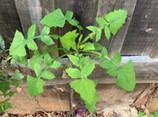
Sow thistle (Sonchus oleraceus)
Sow thistle looks a bit like upwardly mobile dandelions with a vertical trunk and multiple flowers. Despite the name they are not prickly but are a tasty and only slightly bitter salad green when quite young. When older, the growth tips are easy to harvest, and delicious cooked and served with olive oil and lemon juice. They have hollow stems and produce a white sap when picked. Perhaps our favourite edible weed!
There are many more edible weeds like wild lettuce, wild brassicas, salsify, gallant soldier, Madeira vine, blackberry nightshade and included in our books The Weed Forager’s Handbook and the kids’ book Let’s Eat Weeds.
See the website for extensive ID photos, upcoming walks, and to purchase the books: www.eatthatweed.com
